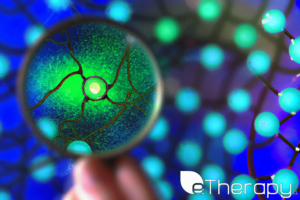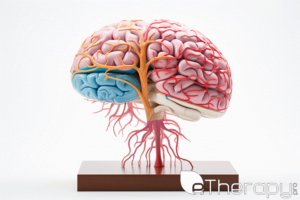 Borderline Personality Disorder (BPD) is a severe mental health condition characterized by a pervasive pattern of instability in interpersonal relationships, self-image, and emotions. Recognizing the importance of accurate testing and diagnosis is key to understanding BPD and starting the path toward effective treatment.
Borderline Personality Disorder (BPD) is a severe mental health condition characterized by a pervasive pattern of instability in interpersonal relationships, self-image, and emotions. Recognizing the importance of accurate testing and diagnosis is key to understanding BPD and starting the path toward effective treatment.
Understanding Borderline Personality Disorder
Understanding Borderline Personality Disorder involves a grasp of its complexity, the symptoms typically exhibited, and the necessity of a professional diagnosis.
What is BPD?
BPD is a disorder marked by intense emotional reactions, impulsive behaviors, unstable relationships, and a problematic self-image. Individuals with BPD often experience significant distress and disruption in their lives, with symptoms severely impacting their daily functioning and relationships.
The Importance of Professional Diagnosis
While self-assessment can raise initial concerns, it’s vital to consult with a mental health professional for a comprehensive evaluation and definitive diagnosis. This consultation ensures an accurate understanding of your symptoms within the context of your personal history and current circumstances.
Borderline Personality Disorder: The Role of the DSM-5 in BPD Diagnosis
The Diagnostic and Statistical Manual of Mental Disorders, Fifth Edition (DSM-5), provides the criteria mental health professionals use for diagnosing BPD.
DSM-5: The Diagnostic Tool
The DSM-5, a product of more than a decade of effort by hundreds of international experts in all aspects of mental health, lists nine key symptoms of BPD.
DSM-5 Criteria for BPD
For a professional diagnosis of BPD, an individual must persistently exhibit at least five of these symptoms across a variety of settings and situations. These criteria ensure a standardized and reliable diagnosis of BPD.
Initial Steps: Recognizing the Signs and Seeking Help
The process of getting tested for BPD involves initial recognition of potential symptoms and seeking professional help.
Recognizing Symptoms and Seeking Help
Noticing potential signs of BPD in oneself or a loved one is the first step toward getting help. Recognizing these symptoms leads to the important step of seeking professional help. Online platforms like eTherapyPro can offer guidance and support in this initial phase.
Borderline Personality Disorder: The Diagnostic Process
The diagnosis of BPD involves a thorough professional mental health evaluation, including a comprehensive clinical interview and history-taking, and sometimes, additional psychological testing.
Professional Mental Health Evaluation
This evaluation is typically conducted by qualified professionals, such as psychologists, psychiatrists, or licensed therapists. During the clinical interview, the professional will ask about your symptoms, mental health history, and personal and family health history.
Role of Psychological Testing
Depending on the professional’s assessment, psychological tests might be used to supplement information gathered during the interview. These tests can help gather additional data about symptoms and personal functioning to guide diagnosis and treatment planning.
Borderline Personality Disorder: Understanding the Results and Moving Forward
Interpreting the results of the diagnostic process, understanding what a BPD diagnosis means, and planning for next steps are critical components of the testing process.
Interpreting the Results
If the evaluation results suggest BPD, your mental health professional will discuss this with you and provide guidance on the next steps. Misinterpretation of these results without professional guidance can lead to misunderstanding and unnecessary worry.
Next Steps
Following a BPD diagnosis, your mental health professional will discuss treatment options with you. Treatment generally involves a combination of psychotherapy and medication, with the specifics tailored to each individual’s needs.
Understanding your diagnosis and cooperating with your treatment plan are essential steps toward managing BPD effectively. It’s a journey that involves time, effort, and patience, but with the right professional support, it’s a journey that can lead to improved mental well-being and a better quality of life.
Borderline Personality Disorder: Treatment and Management Post-Diagnosis
Once a BPD diagnosis is confirmed, the journey does not end. Rather, it marks the beginning of an ongoing process of treatment and management, which is crucial for improvement and recovery.
Therapy and Medication
The cornerstone of BPD treatment is psychotherapy, often supplemented with medication. Therapies such as Dialectical Behavior Therapy (DBT), Cognitive Behavioral Therapy (CBT), and Schema-Focused Therapy have been found effective for BPD. Medications can help manage co-occurring issues such as depression, anxiety, or impulsivity. However, a tailored treatment plan based on the individual’s symptoms and needs is the most effective.
Online Therapy with eTherapyPro
Online therapy with eTherapyPro can be a convenient and accessible option for many people, allowing access to licensed professionals from the comfort of home. The platform provides a secure space for text, video, or voice chat, and professionals can assist with ongoing management of BPD, including psychoeducation, skills training, and emotional support.
Coping Strategies and Lifestyle Modifications
Alongside professional help, certain coping strategies and lifestyle modifications can help manage BPD symptoms. Regular physical activity, adequate sleep, and balanced nutrition can support overall mental health. Mindfulness practices, stress management techniques, and building a strong support network can also be beneficial.
Borderline Personality Disorder: The Importance of Follow-Up and Regular Monitoring
Just like with any other chronic condition, BPD requires regular monitoring and follow-up. Consistent engagement with treatment, adjustments based on progress, and ongoing communication with your mental health professional are key.
Regular Therapy Sessions
Regular therapy sessions, whether in-person or through online platforms like eTherapyPro, can provide ongoing support, monitor progress, and adjust treatment plans as needed.
Ongoing Medication Management
If medications are part of your treatment plan, ongoing management is necessary. This involves monitoring the effectiveness of the medication, its side effects, and making any necessary adjustments.
Crisis Planning
BPD can often be associated with crises like severe emotional distress or suicidal thoughts. Having a crisis plan in place can provide a safety net during these times. This plan might involve emergency contact numbers, a list of calming strategies, or identifying a network of supportive people who can help during a crisis.
In conclusion, getting tested for BPD involves multiple steps, from recognizing the signs to seeking professional help, understanding the diagnostic process and results, and then navigating treatment and management. While the journey can be challenging, with the right support and resources, such as those offered by eTherapyPro, individuals with BPD can lead fulfilling lives.









